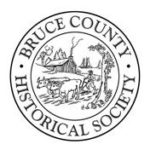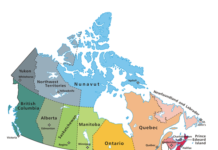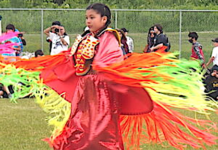
Our pioneering ancestors made do with home-made presents at Christmas. Mother could sew a rag doll for her daughter. Father might whittle a toy horse for his son. Then as families prospered they were able to buy gifts in the local general store, practical gifts like dishes, a new coat or boots.
Everything changed, however, when mail-order shopping arrived. You could order goods from the distant city, a boon for rural areas. Nothing was more eagerly awaited each year than the mail-order catalogue.

Long before the first Canadian Tire catalogue appeared in 1928, there was Timothy Eaton’s catalogue, started in 1884. By the turn of the century Eaton’s produced a Christmas catalogue and buying gifts was easy.
Not that local businesses were pleased. In a sentiment which shop-owners would echo today, the Port Elgin Times of December 9, 1925 tried to steer people away from ordering presents by mail. “Buy at home this Christmas and avoid the worry of delayed shipments and the disappointment which comes from paying for things unseen,” it wrote. “Be loyal to the home merchant.”
Local merchants might complain, but shopping by mail proved irresistible, especially for folks living far from town.
Picture the scene when the new mail-order catalogue finally arrived. Many a dreamy day and night was spent leafing through the pages. Here were the visions which filled children’s heads — teddy bears, Tinkertoys, Meccano, picture blocks, story books, skates, snowshoes and toboggans.

For boys there were cowboy suits, cap guns, bicycles and toy cars, trucks and trains. A girl could expect subtle training for domestic duties — toy dishes, pots and pans, irons, brooms and dust pans.

Of course there were many kinds of dolls, dolls with beautiful outfits and eyes that went to sleep and real human hair. Perhaps the most-anticipated gift in a little girl’s life was the annual Eaton Beauty doll, produced from 1900 to 1999. Dolls which sold for $1 fetch $100 and up today.
For the children, a new catalogue in the house meant they could inherit the old one. It had so many uses. Little girls cut out figures to make paper dolls; pictures of tables and chairs furnished homemade doll houses. Boys would tie a catalogue to each shin to make goalie pads when playing shinny. Women would sew their family’s clothes, based on illustrations in catalogues.
In poorly-equipped one-room schoolhouses, teachers used old catalogues to teach children to read. Crumpled up, the pages filled drafty cracks in cabin walls. And those pages were handy in the outhouse, too.
Let’s not forget waking up Christmas morning to a stocking full of candies, toys and special treats. Remember an orange in the toe of your stocking? Store owners stocked up on citrus fruit, nuts and chocolate bonbons.

The tradition of Santa Claus coming to town has a long history. The Port Elgin Times reported that in the 1920s Santa visited town on Christmas Day in the afternoon to “greet the children” on the main street. Children could then thank him for the gifts he delivered.
The thirties brought the Great Depression. Amid the hardship, Bruce County towns came together at Christmas to ensure that residents could take part in community celebrations.
The Beacon reported on December 24, 1931 that a large crowd of adults and children paraded down High Street in Southampton, headed by the Citizens’ Band. They greeted Santa Claus at the Community Christmas Tree, where he distributed a “bag of good things” to each child. At the Walkerton parade in 1931, the children turned out in such numbers that Santa’s supply of candy and nuts gave out.
Community groups rose to the task of ensuring a Merry Christmas for all. In 1930 Kincardine Women’s Institute members gathered second-hand clothing for the needy and bought milk tickets for a needy family.
When the 1950s rolled around, the Santa Claus Parade was in full swing. In Port Elgin Santa would parade through town on his sleigh to the community Christmas tree where he would distribute candy to the local kids. Afterwards he travelled by car to visit the sick children in the community.
———————————————————
Robin Hilborn, Bruce County Historical Society












